 Wassail is a warm alcoholic drink mixed with spices and made with either wine, beer, cider, brandy, or a combination of more than one. It’s traditionally enjoyed during the week of Christmas, accompanying carolers as they go from house to house wishing good tidings. There’s also a lesser-known forms of wassailing, that of going to the orchards to bless the tress in hopes for a bountiful season.
Wassail is a warm alcoholic drink mixed with spices and made with either wine, beer, cider, brandy, or a combination of more than one. It’s traditionally enjoyed during the week of Christmas, accompanying carolers as they go from house to house wishing good tidings. There’s also a lesser-known forms of wassailing, that of going to the orchards to bless the tress in hopes for a bountiful season.
You may be familiar with the carol “The Wassail Song”:
Here we come a-wassailing
Among the leaves so green,
Here we come a-wand’ring
So fair to be seen.
Love and joy come to you,
And to you your wassail, too,
And God bless you, and send you
A Happy New Year,
And God send you a Happy New Year.
The word “wassail” likely predates the Christmastime association. It’s derived from the old English “waes hail” – a toast to good health – and is found in literature dating back to the eighth-century.
Whether you’re wassailing from house to house, blessing the apple trees, or just spending time with family this holiday, consider making some wassail with your own homebrew. The wassail recipe below calls for sherry or Madeira wine to be combined with brandy. I’ve adapted it to use a combination of homebrewed beer and wine, leaving the brandy optional if you want that extra punch.
Wassail Recipe (adapted from the Joy of Cooking)
Makes 22 six-ounce servings
Core and bake:
- 12 all-purpose apples
Combine and boil for 5 minutes:
- 4 cups sugar
- 1 cup water
- 1 tbsp. ground nutmeg
- 2 tsp. ground ginger
- 1/2 tsp. ground mace
- 6 whole cloves
- 6 allspice berries
- 1 cinnamon stick
Meanwhile, beat in a large bowl until stiff but not dry:
- 12 egg whites
Beat in another large bowl until light in color:
- 12 egg yolks
Fold the whites into yolks. Strain the sugar and spice mixture into the eggs, combining thoroughly, but gently. Bring nearly to a boil in a large pot:
- 6-7 twelve-oz. bottles of homebrewed ale (I would shoot for something malt-forward, like a porter or a Scotch ale)
- 2 cups of sherry or Madeira wine
- up to 2 cups brandy (optional)
Gradually add the beer/wine mixture to the spices and eggs, whisking vigorously with each addition. Add the brandy towards the end. Just before serving, with the mixture foaming, add the baked apples. Serve in warm mugs, placing a piece of baked apple in each one.
If I remember correctly from last Christmas, this wassail recipe certainly does the trick! Do you have a favorite holiday drink tradition?
————————————————————————————————
David Ackley is a beer writer, brewer, and self-described “craft beer crusader.” He holds a General Certificate in Brewing from the Institute of Brewing and Distilling and is founder and editor of the Local Beer Blog.

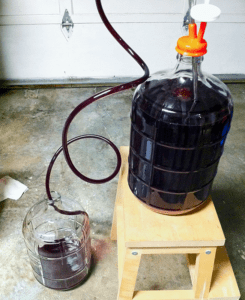
 My name is Leigh Erwin, and I am a brand-spankin’ new home winemaker! E. C. Kraus has asked me to share with you my journey from a first-time dabbler to an accomplished home winemaker. From time to time I’ll be checking in with this blog and reporting my experience with you: the good, bad — and the ugly.
My name is Leigh Erwin, and I am a brand-spankin’ new home winemaker! E. C. Kraus has asked me to share with you my journey from a first-time dabbler to an accomplished home winemaker. From time to time I’ll be checking in with this blog and reporting my experience with you: the good, bad — and the ugly.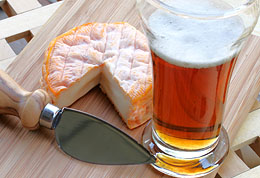 So much of the appreciation of beer comes from its relationship with food. Among the many gastronomical combinations, few offer such a perfect marriage as the pairing of beer and cheese.
So much of the appreciation of beer comes from its relationship with food. Among the many gastronomical combinations, few offer such a perfect marriage as the pairing of beer and cheese.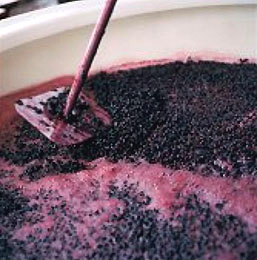 I just wanted to ask you if you think stirring or swirling a wine must when it starts to slow down before the first racking, because point zero hasn’t been reached yet, would that help or hurt anything as far as the wine is concerned, or should I just add more nutrient and not stir or swirl at all?
I just wanted to ask you if you think stirring or swirling a wine must when it starts to slow down before the first racking, because point zero hasn’t been reached yet, would that help or hurt anything as far as the wine is concerned, or should I just add more nutrient and not stir or swirl at all?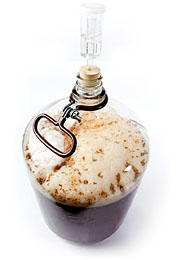 Over on the E. C. Kraus Wine Blog, Ed has been sharing some of the key winemaking terms used by professional and hobbyist winemakers.
Over on the E. C. Kraus Wine Blog, Ed has been sharing some of the key winemaking terms used by professional and hobbyist winemakers.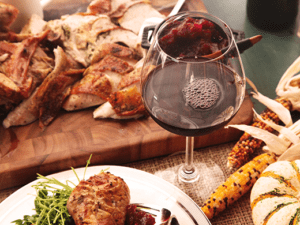 Happy Belated Thanksgiving, everyone! Leigh here, just checking in!
Happy Belated Thanksgiving, everyone! Leigh here, just checking in!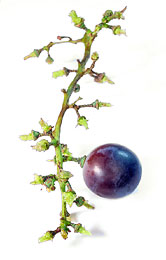 What happens when you add too much tannin? I’ve been making wine for about 5 yrs now and have had good results for each of the many fruit wines that I’ve made…I was always very careful to make sure measurements were accurate…this time making a pear wine, I made the mistake of picking up wine tannin powder and added 2 tbls…I was suppose to be adding pectic (which is what I thought I was holding)….when I realized what I had done, I was able to pull some of the tannin out, since I hadn’t mixed the must…though I’m sure I didn’t take enough of it back out…can this be fixed or do I need to trash this wine…
What happens when you add too much tannin? I’ve been making wine for about 5 yrs now and have had good results for each of the many fruit wines that I’ve made…I was always very careful to make sure measurements were accurate…this time making a pear wine, I made the mistake of picking up wine tannin powder and added 2 tbls…I was suppose to be adding pectic (which is what I thought I was holding)….when I realized what I had done, I was able to pull some of the tannin out, since I hadn’t mixed the must…though I’m sure I didn’t take enough of it back out…can this be fixed or do I need to trash this wine…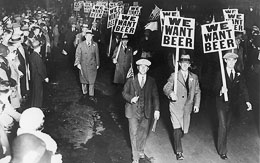 When we left off in
When we left off in  Well, hello there readers of the Homebrewing.org blog!
Well, hello there readers of the Homebrewing.org blog!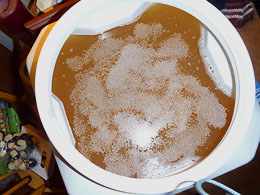 Last time I “saw” you all, I had just received my new
Last time I “saw” you all, I had just received my new  The initial specific gravity reading on my juice was 1.086, which was in between the recommended 1.080-1.095 levels. So far, so good, right?
The initial specific gravity reading on my juice was 1.086, which was in between the recommended 1.080-1.095 levels. So far, so good, right?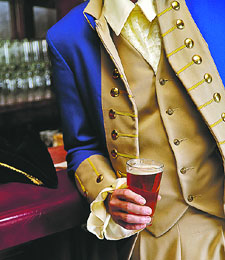 Since the earliest Sumerians fermented grains in pots some 10,000 years ago, making beer at home was for a long time an important part of domestic responsibilities. Extensive beer making traditions exist around the world whether in Africa, Asia, or the Americas, where indigenous cultures used what resources they had available to make the nutritious, seemingly magical beverage that we know as beer. However, in the United States, the homebrewing tradition nearly died out.
Since the earliest Sumerians fermented grains in pots some 10,000 years ago, making beer at home was for a long time an important part of domestic responsibilities. Extensive beer making traditions exist around the world whether in Africa, Asia, or the Americas, where indigenous cultures used what resources they had available to make the nutritious, seemingly magical beverage that we know as beer. However, in the United States, the homebrewing tradition nearly died out.